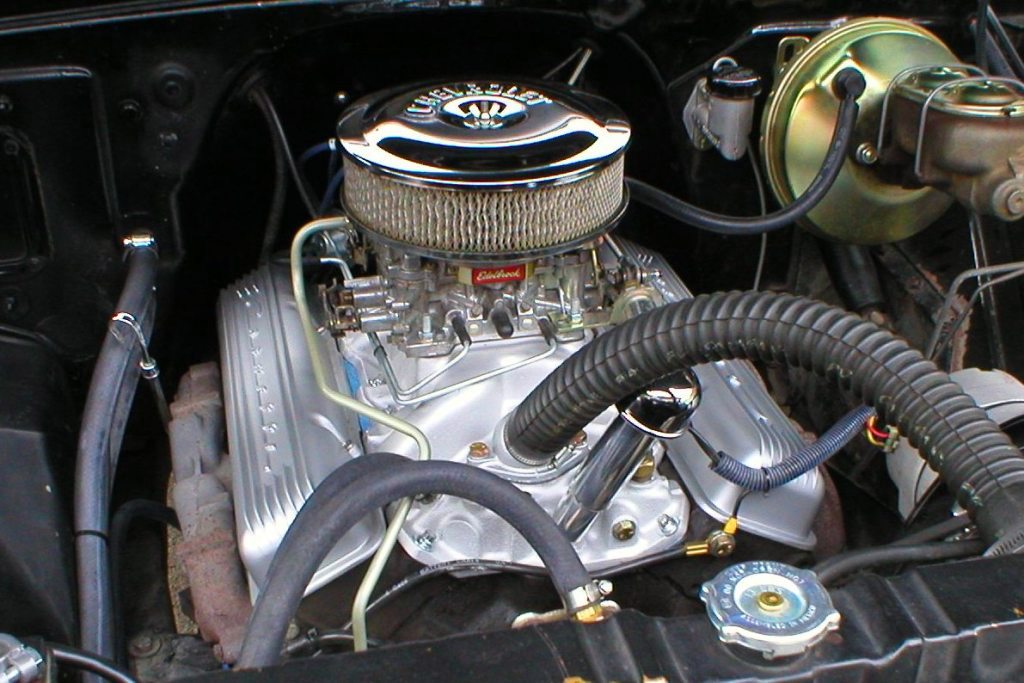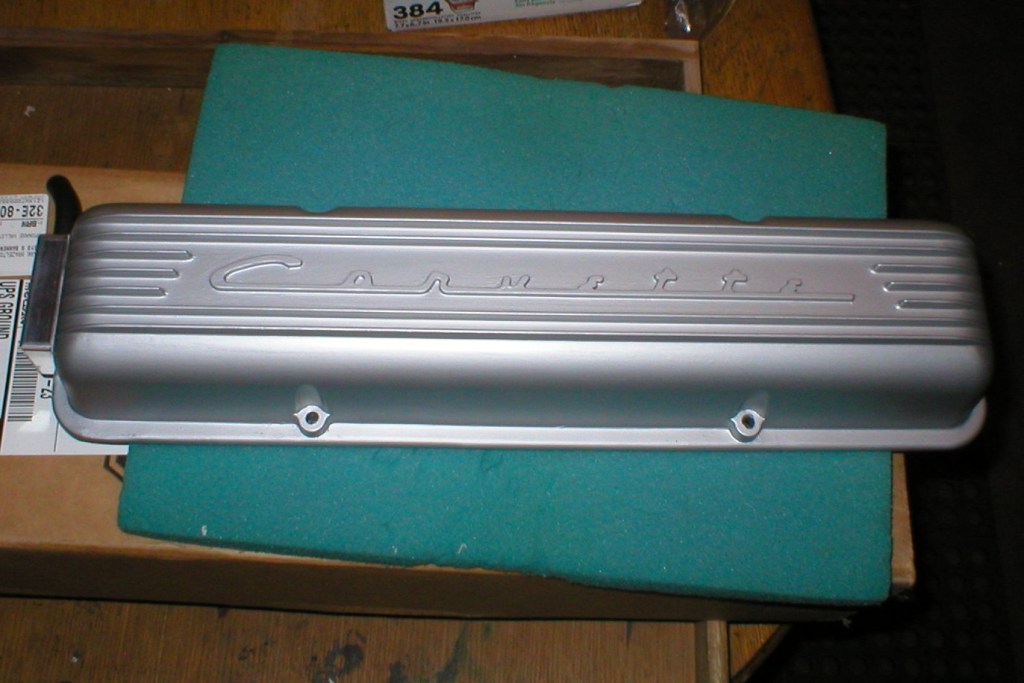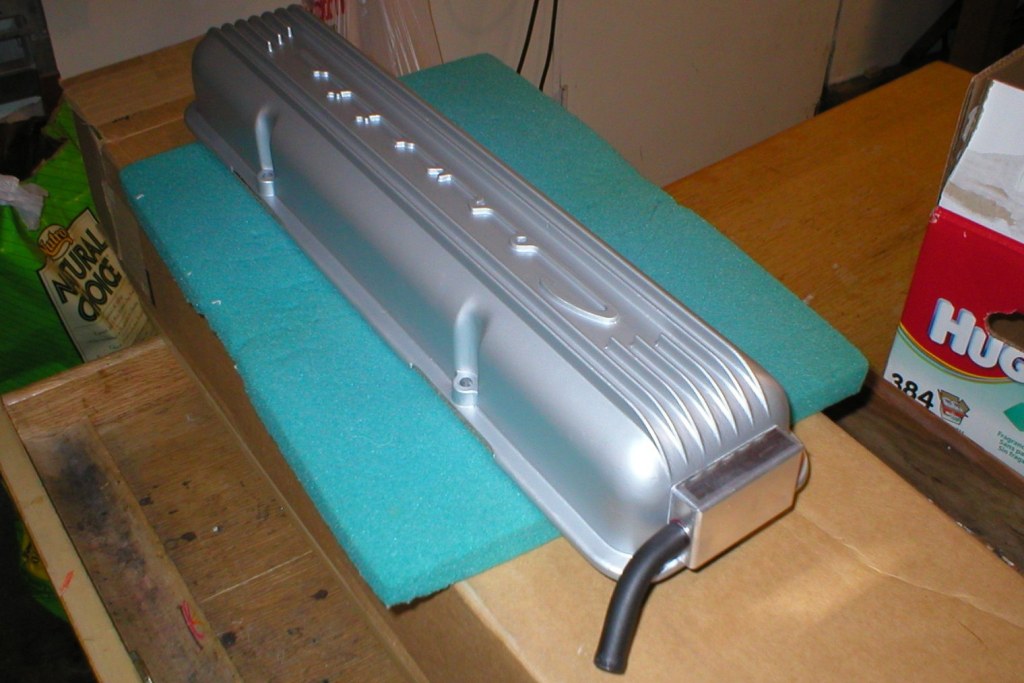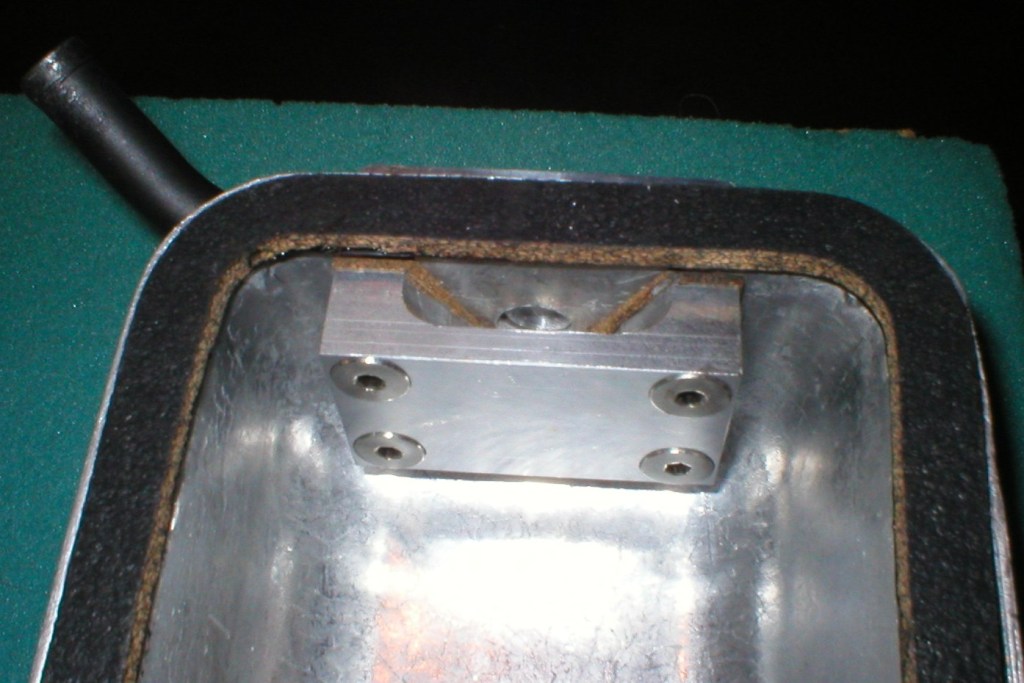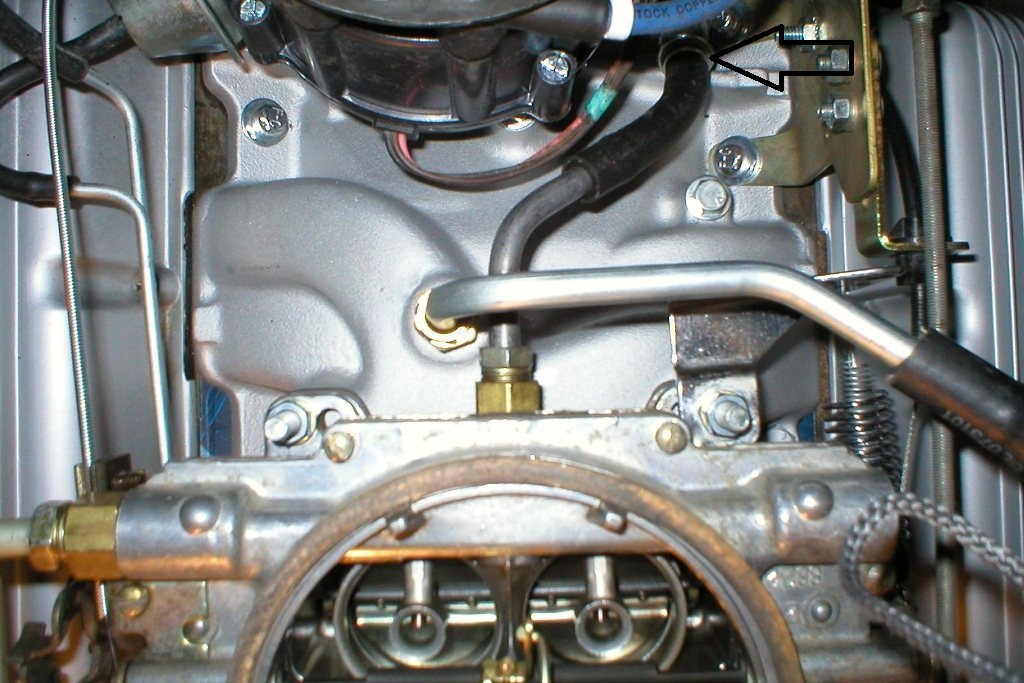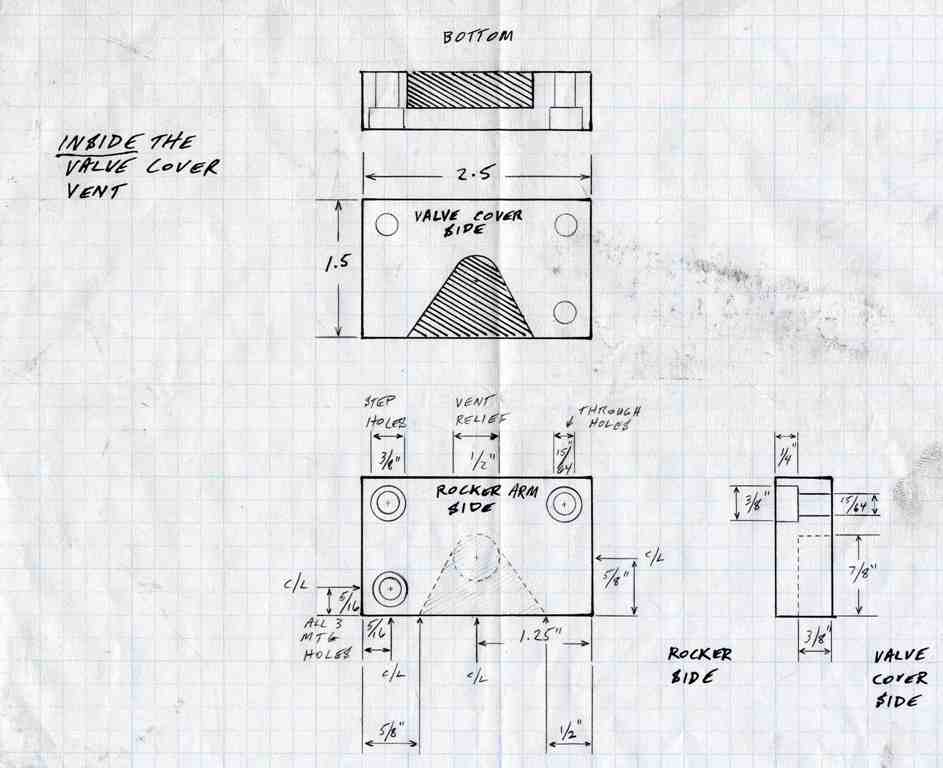Old School Valve Cover w/ a PCV Valve
Those old 283/327 cast aluminum Corvette valve covers are the absolute coolest ones on the face of planet, but there are no provisions for positive crankcase ventilation. Here's one way to have your cake and eat it too!
I wanted the appearance of a 283/327 Corvette engine on a 350 Chevy. I did a bunch of internet research and found no viable solution for the smog valve connection, so I came up with my own.
Following is one method to run early style sealed valve covers on a later small block - not having the road draft tube for crankcase venting. Most installations of this type I've seen have a hole punched in the top or side of the valve cover spoiling the cosmetic effect, or the smog hose connected to the oil fill tube just below the breather cap where it doesn't vent the crankcase properly.
After careful analysis of the rocker arm to valve cover clearance, I was convinced a smog vent could be successfully connected to the rear of the passenger side valve cover where it would be difficult to detect. I designed the two-piece adapter shown below, and my son machined it out of aluminum. He made a few improvements from the drawings by substituting stainless flat head screws threaded into the external half of the adapter. The inside piece forms a shroud allowing oil to splash against the end wall and drain back into the head, much like a stock baffle. The external half provides the connection for the smog hose. In a conventional engine compartment the finished installation is nearly invisible. The smog hose routes behind the distributor (hiding the smog valve at the rear of the manifold) and comes up on the driver side, attaching to the rear of the carb via a fitted hard line.
Following are two pics of the finished installation. Click on photos for larger view
After drilling holes in the rear of the valve cover, the two parts were assembled using red Loctite, cork gasket material inside, and thin composite material outside. The steel tube was a tight slip fit into the external adapter also adhered with red Loctite. There have been no oil control issues with this setup. The schematic does not indicate the curved hard tube which ultimately provided the best angle to hide the hose. If further stealth is required more effort could be put into the final shape of the external half of the adapter.
Since the Corvette covers are short, this method should also work with stock steel covers (like the ones shown below), Mickey Thompsons, or any type with a somewhat flat end wall. This arrangement may have clearance problems with roller rockers.
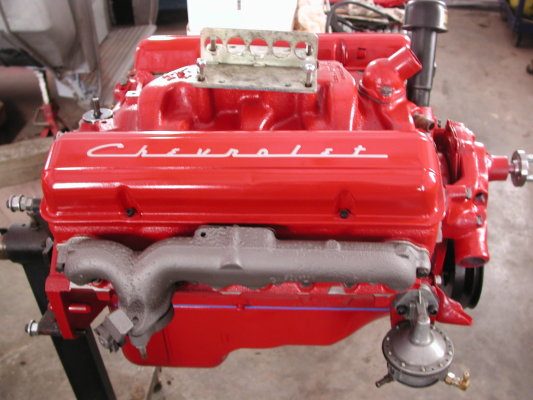
This valve cover modification will only work in combination with an intake manifold having the oil fill tube at the front, which must be topped by a breather style oil fill cap. Factory 265, 283 and 327 engines will already have the oil fill tube. My engine uses the Edelbrock Performer RPM 7101 intake manifold which has a cast in boss for the oil fill tube. A hole was machined in the boss allowing the tube to be installed:
Edelbrock also offers the Performer 2703 which includes the open boss and oil fill tube with the manifold:
NOTE – When running sealed valve covers it is important to ventilate the crankcase from the rear of the engine, either with a smog valve or a road draft tube. In this configuration fresh air enters the front of the engine through the breather cap, and crankcase fumes are pulled from the rear of the engine. When running sealed valve covers, do not be tempted to connect the smog valve directly to the oil filler tube. This arrangement will draw fresh air in through the breather cap directly to the smog valve, bypassing the crankcase and leaving it unventilated.

